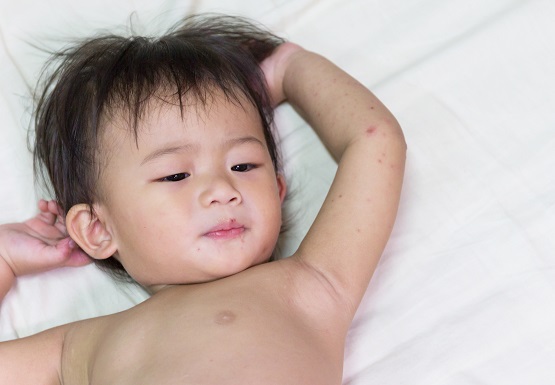
For parents of young children, Hand, Foot and Mouth Disease (HFMD) is an ever-present concern. Dr Ong Eng Keow, Paediatrician & Neonatologist, International Child and Adolescent Clinic, sheds light on its symptoms, treatment and prevention.
A COMMON VIRAL INFECTION
HFMD is a common infectious condition caused by various strains of the Coxsackie virus, Enterovirus and Echovirus. It is spread by contact with the saliva, faeces or blisters of an infected person. Though the virus is usually ingested, it can also be transmitted through airborne droplets of secretions.
Dr Ong shared that though HFMD occurs all year round, there are peaks in some years in April, May and October. Big outbreaks have also been observed to occur every two to three years, for which no particular reason has been found.
SYMPTOMS AND PATTERNS
The symptoms of HFMD can be quite varied but generally include mouth or throat pain, which often leads to a refusal to eat. There is usually an accompanying fever, which may be low, and skin eruptions over the hands and feet, usually over the edges of the fingertips. Sometimes rashes may appear over the buttocks, particularly in infants and young children, which may or may not include blisters. They are usually not itchy or painful in children, but can be when the condition occurs in adults. In addition, red spots appear in the throat, which soon erupt into ulcers. These ulcers may spread to the sides of the mouth and also the tongue. Occasionally, there will be a rash over the perioral region or mouth
as well.
There are variants of HFMD, one of which presents with just throat and mouth ulcers, called Herpangina, with no external rashes. They are usually accompanied by fever.
WHY IT MAINLY AFFECTS CHILDREN
Dr Ong explained the reasons why HFMD is more prevalent among children than adults.
“Firstly, children tend to put things in their mouths, especially toys and other objects. Some are thumb-suckers and because they have not developed good hygiene practices, they contract these diseases very easily,” shared Dr Ong. “Secondly, they are often gathered together in an environment that facilitates the transmission of the virus, such as a childcare centre. Thirdly, they have a lower immunity to ward off infections.”
DIAGNOSIS AND TREATMENT
A diagnosis of HMFD is based on the typical appearance and location of the oral ulcers and the characteristic rash over the hands and feet.
“Confirmation of the specific viral etiology is seldom necessary in children with uncomplicated HFMD but may be warranted if the diagnosis is uncertain and will affect the disease management,” said Dr Ong.
HFMD is a self-limiting disease, which usually lasts for seven to 10 days. Treatment is symptomatic and mainly aims to control the fever and ensure hydration. Analgesic oral drops may be used to relieve pain and encourage eating and drinking.
Contrary to a popular misconception, you can contract HFMD more than once, as there are different strains that can cause it.
COMPLICATIONS
Dr Ong explained that there can be complications from HFMD, which are usually associated with Enterovirus A71. These complications include brain stem encephalitis, acute flaccid paralysis and aseptic meningitis. Depending on the severity, there can be long-term complications and even fatality.
PREVENTIVE MEASURES
While no effective vaccine has been developed for HFMD to date, there are some common-sense measures that can be taken to avoid and contain infection. “Parents and caregivers can practice and inculcate good hygiene habits in their children,” advised Dr Ong. “Once a child has caught HFMD, they should keep them away from public places.”
To prevent HFMD spreading to other family members, it is a good idea to wash all their toys and even keep their eating utensils separate from those of other family members.
And if your best preventive efforts prove to be in vain, do not feel guilty about your child’s condition. Chances are, time and a little patience will heal your little patient.
Article contributed by Dr Ong Eng Keow, an accredited doctor of Mount Alvernia Hospital.
This article is taken from our My Alvernia Magazine Issue #39. Click here to read the issue on our website or on Magzter.